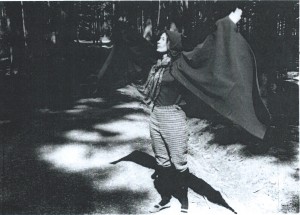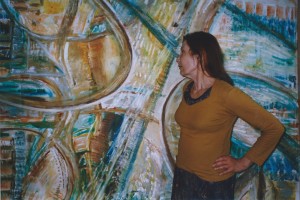The following text is from her website… Fanchon Fröhlich (nee Angst) was a philosophy student at the University of Chicago, where she worked with Rudolf Carnap (formerly of Vienna, and the founder of the Vienna Circle) and Oxford where she studied with Sir Prof. Peter Strawson, doing a doctorate in Primary and Secondary Qualities. She studied at Liverpool College of Art, then moved to St Ives to work with Peter Lanyon. Later she travelled to Paris where she worked with the sculptor Szabo and finally studied at Stanley William Hayter’s etching atelier, Atelier 17, all of the time preserving her faith in Abstract Expressionism.
Fanchon’s artwork unites philosophy of science and art, evident for instance in the ‘Position of Light in Art’ and the ‘Paradoxes of Abstract Expressionism and Pop Art’ to the book she co-edited with Sylvie Le Seac’h (who was also a pupil of Hayter): ‘S.W. Hayter Research on Experimental Drawing: Systems of Oscillating Fields‘. Fanchon has produced both representational paintings – among which is the portrait of her husband to be displayed in the Royal Society (for Scientists) in London – and abstract expressionist paintings, etchings, and more recently ‘Collective Phenomena’. ’ Collective Phenomena’ is the name for a group of abstract artists painting collectively on the same surface, using the gestures of one then another as inspiration and results (in some cases) to a unusual counterpoint.


